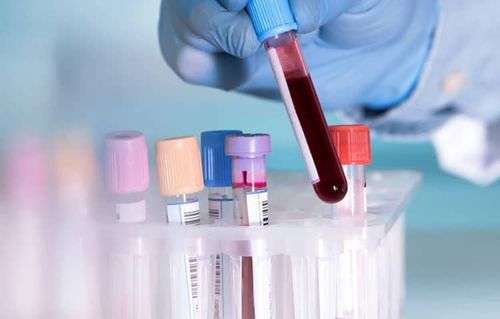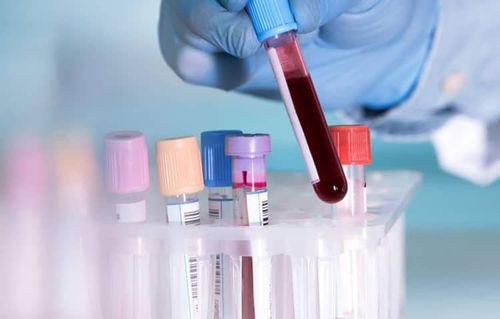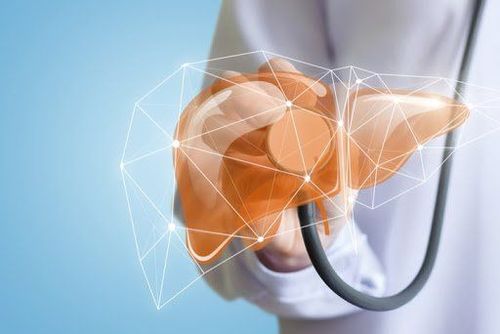This is an automatically translated article.
The article is professionally consulted by Master, Doctor Nguyen Thi Ngoc - General Internal Medicine - Endocrinology - Department of Examination & Internal Medicine - Vinmec Central Park International General Hospital. Doctor has more than 10 years of studying, researching and working in the field of endocrinology.Normally there is a certain amount of protein in the blood, while in the urine there is no protein. Changes in the amount of total protein in the blood and the presence of protein in the urine indicate an abnormality of the body.
1. Whole blood protein test
Whole blood protein test to measure the amount of albumin and globulin present in the serum portion of blood.Albumin accounts for half of the total protein in the blood has the following functions: Maintain colloidal osmotic pressure in the blood, keep water from leaking out of the blood vessels; Provide amino acids for protein synthesis in the periphery; Responsible for binding, transporting a number of substances produced in the body's metabolism such as fatty acids, bilirubin, steroid hormones and other active substances,... throughout the body. Globulin ensures the following vital functions of the body such as: Participating in maintaining acid-alkaline balance. Involved in the body's inflammatory response. Plays a key role in the immune defense mechanism and the production of antibodies. Involved in and regulating blood clotting and fibrinolysis. Total protein concentration reflects nutritional status and is used to screen and diagnose some liver and kidney diseases and some other diseases. Abnormalities in the total protein test appear early before the onset of symptoms of the disease. From there, it is recommended to do some more tests to find out the cause of the increase or decrease in total protein in the blood.

Xét nghiệm máu
Increased total protein in the blood Common in: dehydration, chronic inflammation, viral infections such as hepatitis B, C or HIV, seen in many cancers such as multiple myeloma, sarcoidosis and Waldenstrom macroglobulinemia, severe kidney or liver disease.
Decrease in total protein in the blood is common due to a lack of protein in the diet such as those following a vegetarian diet. Hypoproteinemia is also seen in diseases that reduce protein absorption from meals such as Celiac disease, Crohn's disease, parasitic infections, pancreatic damage, intestinal damage, intestinal surgery to help lose weight. Damage to the liver and kidneys also causes hypoproteinemia
2. Quantitative urine protein test
Normally, there is little or no protein in the urine due to the mechanism of protein reabsorption in the kidney. However, if the kidneys have medical conditions that can cause large amounts of protein to be excreted in the urine. Normally, a person's body will eliminate less than 150 mg of total protein and less than 20 mg of albumin in the urine every 24 hours.Pregnancy may require urinalysis to assess proteinuria. If the amount of protein in the urine exceeds 300 mg/day, it can be a sign of preeclampsia - a complication of pregnancy.
Indications for quantitative urine protein test when: Poor kidney function, hypertension, diabetes, cardiovascular diseases such as coronary artery disease, heart failure... systemic diseases Systemic conditions such as lupus erythematosus, hematuria, pregnant women
Proteinuria frequently appears as a manifestation of urinary kidney disease or due to abnormalities in plasma proteins.
Due to abnormality of plasma proteins: There are large amounts of protein in low molecular weight, they are filtered through the glomeruli, when this amount of protein is excessively filtered and reabsorbed in the renal tubules, it will be excreted. and is abundantly present in the urine. Seen in multiple myeloma, hemolytic disease (hemoglobinuria) or rhabdomyolysis (myoglobinuria).

Xét nghiệm nước tiểu
When proteinuria is low: Seen in diseases such as pyelonephritis, interstitial nephritis, polycystic kidney, renal vascular fibrosis, hypertension. When the amount of protein in the urine is moderate: Seen in glomerular diseases, acute and chronic glomerulonephritis or diabetic nephropathy, often accompanied by symptoms of soft edema, oliguria or anuria, hypertension, hematuria.. When proteinuria is high: Manifestations of nephrotic syndrome, often including symptoms such as hypoproteinemia (<60g/l), increased cholesterol and triglycerides, patients have a lot of edema, large and very rapid edema (due to hypoproteinemia) blood reduces plasma oncotic pressure, the amount of fluid pushed out into the interstitial tissue leads to rapid and rapid edema).
Please dial HOTLINE for more information or register for an appointment HERE. Download MyVinmec app to make appointments faster and to manage your bookings easily.













